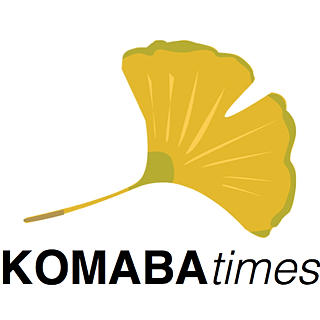NFAJ: Traveling Through Time with Movies
- Komaba Times
- Feb 1, 2019
- 3 min read
Updated: Oct 10, 2019
By YISAC PARK
Have you ever seen a black-and-white movie? Do you think that black-and-white movies are old and non-accessible? If you are interested in classic movies or the history of film, you may have wondered about where to look. The National Film Archive of Japan might be the perfect place.
The National Film Archive of Japan (NFAJ) is the one and only public institution dedicated to cinema in Japan, located in Kyobashi, Tokyo. It functions as a promoter of film culture via the preservation, research and distribution of movies. The NFAJ started in 1952 as the Film Library, as a part of the National Museum of Modern Art. In 1970, it changed its name to the National Film Center. Recently, it became independent from the National Museum of Modern Art and is established as one of Japan's six national museums of art.

NFAJ, a view from the outside | Photo by author
The NFAJ holds a variety of exhibitions and film releases. Movies are grouped into themes, with each theme being shown for a certain period, ranging from 2 weeks to 6 months. Two to three movies are shown per day in two dedicated theatres. Examples of current themes include “Inaugurating NFAJ: Meiji Period in Films” (2018.4.24 – 9.2), “EU Film Days 2018” (2018.5.26 – 6.21).
Since the schedule is irregular it is best to check the film schedule at the homepage. Furthermore, you can watch films at a cheaper price when compared to commercial theatres.

Exhibitions are held at the 7th Floor Gallery. The permanent exhibition, “Nihon Eiga: The History of Japanese Film” guides visitors through the history of Japanese Films from the 1910s to the 1960s. Talk events that analyze and explain certain films are also scheduled throughout the year.
The NFAJ also provides a lot of different activities. The library houses books and articles related to film. You can also get copies of the materials in collection. Educational activities such as lectures and symposiums, Film class, Kodomo Eiga-kan (Kid’s Cinema), World Day for Audiovisual Heritage entices repeated visits. For the further information, visit the NFAJ homepage.

Koni Camera from the permanent exhibition | Photo by author
At the permanent exhibition, various short films are being shown along with the descriptions of history. In one part of the exhibition, the brief history of films was introduced by an old projector. Here you can get a taste of how movie watching was back then. The most noticeable part was the noisy projector, which sounded like a construction site or machine gun fire. While it is hard to listen to the narrator, the atmosphere of old films can be experienced firsthand. Since Japanese animations are famous worldwide and I was curious about the advent and its history, my favorite part was the animation section. To make one short animation, which is about 5-minutes length, more than 10 thousand drawings are required. Even small changes must be repainted and redrawn.
At the special exhibition “Kurosawa Travels around the World: The Masterworks in Posters from the Collection of Toshifumi Makita”, numerous posters of Kurosawa’s movies are displayed. I heard a lot about Kurosawa’s movies but had never actually watched them before. The posters mesmerized me with their vivid colors and varieties. The exhibition convinced me to watch his films.
University of Tokyo students can enter for free due to the National Museum of Art Campus Members system.





Comments